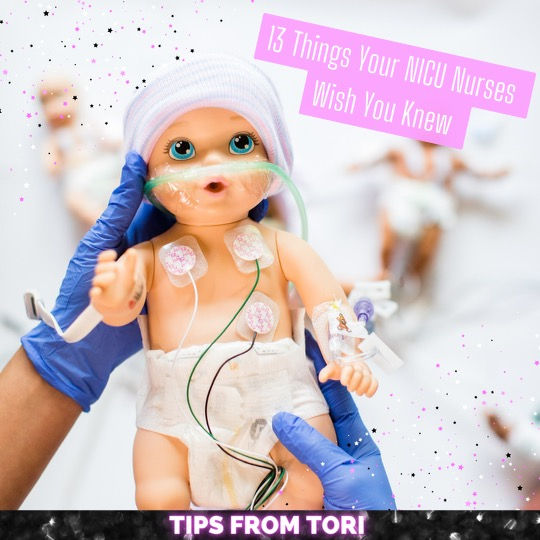What is the most common NICU Diagnosis for Premature Babies?!
- Nurse Tori

- May 2, 2019
- 5 min read
Updated: Jul 19, 2024
The NICU is a complex unit full of tiny brand new fighters. One diagnosis is certainly our most common admission.

Typically babies require about 270 days to fully develop in the womb, after which they are usually ready to make the transition to life on the outside. When babies are born too early, many of their body's organs and systems are immature and unable to function properly on their own. Fortunately, medical science has the ability to help those babies stay alive until they can sustain themselves.
A premature baby is one who is born too early, before 37 weeks. Premature babies may have more health issues and may require hospitalization longer than babies born term or closer to term.
Even the most stable of former extremely preterm infants will be challenged by various degrees of lung disease, extra‐uterine growth challenges, difficulty learning oral skills, and even late-onset sepsis during this time period. One of the most common .....
Respiratory Distress!
Breathing difficulties are one of the most common issues for premature babies!
SO, WHAT CAUSES BREATHING DIFFICULTIES IN PREMATURE INFANTS?
Respiratory The primary function of the lung is to transport oxygen from the inspired air into the blood and to clear accumulated carbon dioxide from the blood. The site of this gas exchange is the alveolus
Breathing difficulties develop in premature babies for many reasons. One of the main being their lungs don't have the full chance to reach full maturity in the womb. Breathing complications in premature babies are caused by an immature respiratory system.
Immature lungs in premature babies often lack surfactant. This substance is a liquid that coats the inside of the lungs and helps keep them open. Without surfactant, a premature baby’s lungs can’t expand and contract normally. This increases their risk for respiratory distress syndrome.
Some premature babies also develop apnea and experience pauses in their breathing lasting for at least 20 seconds.
Some premature babies who lack surfactant may need to be put on a ventilator (breathing machine). Babies who are on a ventilator for a long time are at risk of developing a chronic lung condition called bronchopulmonary dysplasia. This condition causes fluid to build up in the lungs and increases the likelihood of lung damage.
Treatment: While being on a ventilator for an extended period of time may injure a baby’s lungs, it still may be necessary for the baby to receive continued oxygen therapy and ventilator support. Doctors may also use diuretic and inhaled medications.
MOST COMMON RESPIRATORY CONDITIONS:
1. Respiratory distress syndrome (RDS) Symptoms include rapid, shallow breathing and a sharp pulling in of the chest below and between the ribs with each breath.
2. Bronchopulmonary dysplasia, a chronic lung disease, is commonly seen in preemies who weigh less than 1,000gm or <28 weeks Gestational Birth. It can be caused by the long-term use of oxygen and mechanical respiration.
3. Apnea is a condition characterized by prolonged pauses in breathing. Apnea is usually caused by immaturity in the part of the brain that controls involuntary respiration.
Let’s talk NICU patients & of different modes of Respiratory Support for our NICU Patients.

AIRWAY IS EVERYTHING...
The primary function of the lung is to transport oxygen from the inspired air into the blood and to clear accumulated carbon dioxide from the blood. The site of this gas exchange is the alveolus 4. Alveolarization is a process where existing airspaces are subdivided by the formation of new walls, called septa.
Therefore, in the NICU we rely on our Respiratory therapists (ALL THE TIME!). Many NICU units have primary care NICU RT’s that specialize in Preemie care. You might call Nurses & RTs “Besties!” TYPES OF VENTILATORS & NICU SUPPORT:
1️. HFOV (High-Frequency Oscillator Ventilator) Gas is pushed into the lung during inspiration and actively pulled out during expiration (Push/Pull Action). Uses small tidal volumes and active exhalation. HFOV provides smaller, faster, but shorter bursts of breaths which may be less damaging to the premature lungs.
2. SIMV “Conventional” Synchronized Intermittent Mandatory Ventilation: (Breaths delivered at a set pressure)
Initiation of each breath is a ventilator breath in synchrony with the patient’s breath.
PIP, PEEP, and Inspiratory time are set

3️. CPAP (Continuous Positive Airway Pressure) Continuous positive airway pressure (CPAP) is a mode of ventilatory assistance in which positive pressure is delivered to the airway throughout the respiratory cycle. CPAP is delivered through a set of nasal prongs or through a small mask that fits snugly over a baby's nose. CPAP is used to deliver constant air pressure into a baby's nose, which helps the air sacs in the lungs stay open and helps prevent alveolar collapse.

4️. NIPPV (Nasal Intermittent Positive Pressure Ventilation) Provides a set number of breaths per minute (Delivered at a set pressure) In NIPPV, CPAP provides a constant distending pressure & added ventilator support (add back up rate & pressures) (ventilator with no ETT). It is also referred to as continuous distending pressure (CDP) or positive end expiratory pressure (PEEP) when applied through a ventilator along with intermittent mandatory ventilation (IMV).
5️. HFNC (High Flow Nasal Cannula) This is a small plastic tube that goes into the babies nose; Humidified with increased oxygen/air potential. The air-oxygen flow (via blender) of 1-6 L/min.
6️. NC- Nasal Cannula Small plastic tubes that go into your baby’s nose. Air and oxygen go through the tubes into your baby’s lungs.
7️. iNO (Inhaled Nitrous Oxide) This is a gas we deliver with our intubated babies to help improve gas exchange. iNO is a vasodilator which can help improve respiratory failure through enhanced ventilation–perfusion matching and/or a reversal of extrapulmonary shunting. (Used in very sick babies) I will do another Medical Monday explaining more!
8. Oxygen blenders allow O2 concentration to be adjusted between 21% and 100%.
Quick Terminology:
pH: amount of acid in blood
Acidic: lower pH, associated with pulmonary edema, renal failure, and lactic acidosis
Alkalotic: higher pH, associated with hyperventilation, anxiety, pain, hypokalemia, and gastric suctioning
CO2: acid from the lung; reflects respiratory status of acid‐base balance
PO2: partial pressure of oxygen dissolved in blood; and how well oxygen moves from lungs ‐> blood decreased levels = anemia and hypoventilation
HCO3: a base excreted or removed by kidneys; reflects the metabolic acid‐base balance
Base excess (BE): amount of acid required to restore a liter of blood to a normal pH, possible marker of metabolic acidosis or alkalosis
Blood gas skeleton example: pH / PCO2 / PO2 / HCO3 / SaO2 / BE
The use and the details of management with these techniques should be discussed with the Neonatology Fellow or the Attending Physician for each individual patient.
In the era of gentle ventilation and open lung strategy noninvasive ventilatory support in neonates has gained momentum and its use in nurseries around the world is also increased.
Another great resource for you BELOW. I was featured on The Morning Rounds and talked all things NICU Nursing. Dynamics, my personal journey, NICU Nurse Tips & Tricks!



Tori Meskin BSN RNC-NIC. Nurse. Blogger. Podcaster. Tori has been a clinician since 2012, works in acute care/inpatient NICU & Pediatric settings in southern California. She is a blogger, podcaster, NICU & Pediatric Critical Care RN, Sponsored Capella University MSN student, a Barco Uniforms AmbassadoR & Brave beginnings Ambassador. She has obtained her National NICU Nurse Certification (RNC-NIC) & has previously worked as a travel nurse, pursuing bedside experiences in several NICU settings. Follow her as she shares her NICU journey married life & juggles work, school, content creation, & brings you top notch Tips & Tricks along the way. Find her at www.tipsfromtori.com or info@tipsfromtori.com






















Comments